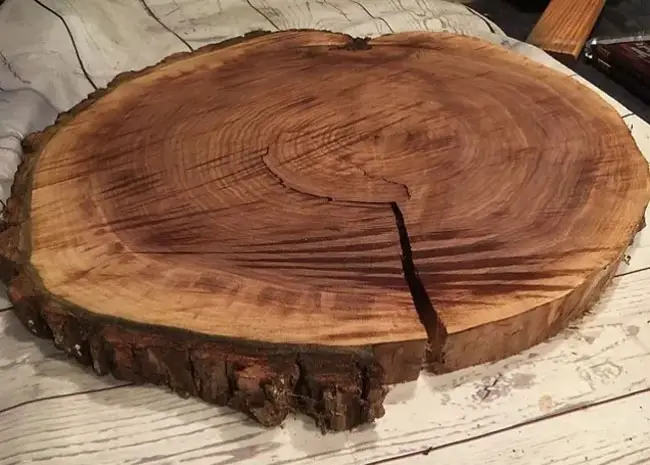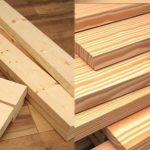How To Stop A Crack In Wood From Spreading: 4 Usable Methods
Wood is prone to cracking, especially during the dying process, mainly due to shrinking. Once a crack forms, it usually continues spreading since the shrinking and swelling process continues. Therefore, if you spot a crack in the wood, stop it promptly.
But what are the methods on how to stop a crack in wood from spreading? There are various methods to stop a crack from spreading on wood, including adding glue epoxy filler. Wooden Dowels and Butterfly Keys are other options to prevent further spreading. Mixing wood filler and hardener will also work for shallow cracks.
Read on to learn the ideal method based on the crack size and prevent it from spreading further on wood.
Methods and Steps to Stop a Crack in a Wood From Spreading
Wood cracks, also known as wood checks in woodworking, are common in many wood types. Cracking can happen on stored wood that is yet to be used. However, wooden furniture not yet coated with finishes and sealants is prone to cracking.

Luckily, there are ways to stop the cracks from spreading by preventing potential damage to the wood. The following are the methods and steps to prevent the crack from spreading.
1. Adding Glue and Sawdust
Using wood glue and sawdust is one of the methods to stop a wood crack from spreading. This method suits cracks that are small to moderate in length and not too deep or wide. Here, you’ll need glue, sawdust, chisel, sandpaper, and paints (optional).
Secure the mentioned things and follow these steps.
- Step 1. Add sawdust to the crack, ensuring that it sips to the deepest parts possible.
- Step 2. Clean the extra sawdust and add glue.
- Step 3. As the glue mixes with the sawdust, it will shrink, so add more sawdust and glue.
- Step 4. Scrap over the mixture with the chisel to remove the excess.
- Step 5. Use the sandpaper to level the crack in the wood.
- Step 6. Clean the wood surface.
- Step 7. Reapply the paints if the cracked wood is part of the furniture.
This video shows the discussed steps.
2. Apply Epoxy Filler
Another method to prevent cracking in the wood is to use epoxy filler. Epoxy resins in the epoxy adhesive filler are strong and create a strong bond when mixed with hardener. This strong bond is ideal to prevent further cracking.
Epoxy fillers can be used alongside sawdust and other fillers to add more viscosity to the filler. You can also add color to match the wood color, meaning there’s no need to repaint the whole wood surface.
You’ll need epoxy resin, hardener, color (optional), torch, sanding machine, mixing stick, and mixing jar. Once you’ve secured these items, follow the steps discussed below.
- Step 1. Check the crack and remove loose dust particles and debris.
- Step 2. Seal one side of the crack with duct tape if it goes through the wood.
- Step 3. Mix the epoxy and hardener equally and add color if you want to. Stir to mix the solution properly.
- Step 4. Pour the filler from one end but leave a small space on the other to allow air to escape. Also, pour slowly on larger cracks since epoxy forms an exothermic reaction, which can cause damage to wood.
- Step 5. Use a piece of stick to spread once the epoxy has slipped into the gap and cover the other end.
- Step 6. Use a blow torch to remove air bubbles from the filler.
- Step 7. Allow the mixture time to cure, and use a sanding machine to level the wood surface.
- Step 8. Apply the wood finish if necessary.
Here is a first-timers’ guide to filling cracks and voids with epoxy resin.
3. Apply Wood Filler
Using a wood filler is another method to prevent the crack from spreading on the wood. This method suits shallow cracks that haven’t extended through the wood.
The method involves using wood filler and hardener on the cracked area to fill it. You will need a wood filler, hardener, sandpaper, and putty knife mixer. Secure these things and follow the steps below to fix them.
- Step 1. Place the ideal amount of wood filler on a flat and clean surface.
- Step 2. Add hardener to the filler and mix with the putty knife. The amount of hardener should be approximately 1/16 of the wood filler amount. However, consult the instructions on your specific wood filler and hardener for the mixing ratios.
- Step 3. Add the mixture to the cracked section of the wood and spread with the putty knife.
- Step 4. Repeat until no more wood filler can get into the wood filler.
- Step 5. Allow the filler to dry for at least 30 minutes.
- Step 6. Use the sandpaper to grind the surface and level it to the wood level.
- Step 7. Add the finish or paint if necessary.
Watch the following video to better understand the steps discussed above.
4. Wooden Dowels and Butterfly Keys
Wooden dowels and butterfly keys are also methods offering aesthetic solutions to big cracks. This method involves using these items along the crack line to prevent further spreading.
This method is labor intensive and requires you to have know-how in cutting and preparing wood. You will need the dowels or keys cut to the ideal shapes, wood glue, and a grinder. Follow the steps discussed below to use this method.
- Step 1. Remove dirt and debris from the crack in the wood.
- Step 2. Measure and cut dowels or butterfly keys on a piece of wood.
- Step 3. Measure and cut a key-shaped slot across the crack enough to fit the dowel or the key.
- Step 4. Add wood glue to the dowel or butterfly wooden shapes.
- Step 5. Insert these shapes into the slot across the crack.
- Step 6. Grind the surface to level the inserted shapes to the wood surface.
- Step 7. Apply finish and paint.
This method is more like the one shown in the video below.
Related Questions
This section contains the frequently asked questions and answers to help you understand this topic better.
Q1. Does Filling Cracks Stop Them From Spreading?
Yes, filling cracks stabilizes the crack, preventing it from expanding or contracting, which can further widen the cracks. Filling them also prevents moisture from penetrating the wood, which can cause the cracking to worsen.
Q2. Can Metal Brackets Patch a Crack on Wood?
Using metal brackets as patches is a feasible method to prevent the spreading of severe and deep wood cracks. This method also suits larger wood pranks that are under significant stress and provide reinforcements. However, the method risks wood degradation due to metal corrosion.
Q3. Can You Prevent Cracks From Developing in a Wood?
Wood cracks are hard to prevent, especially for wood not yet used. However, using various drying techniques, including slow drying and controlling moisture on stored wood. Also, regularly monitor the wood for cracks and fix them earlier.
Final Thoughts
To summarize, use the various filling and patching methods discussed in the article to prevent a crack in the wood from spreading. Follow the steps discussed for a detailed guide on how to go about each method and determine the one ideal for your case.
Also, most of these methods will help fix a cracked section completely. However, while most of these solutions are ideal for both seasoned and first-timers, some will require more experience with woodworking equipment. Hire a professional if you opt for this method to avoid damage.




